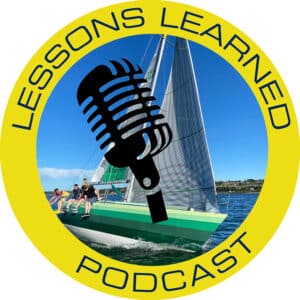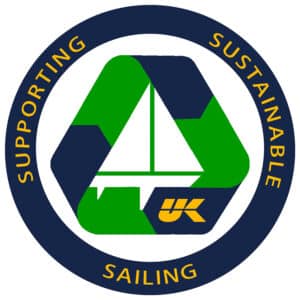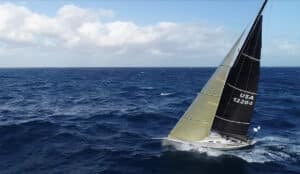Lessons learned by Adam Loory, General Manager, UK Sailmakers International
For more than 10 years I have been teaching sailors about how to rescue a man overboard. It was not until this spring, however, that I was actually on a boat where we had to rescue a real person; that experience proved that practice does matter.
I teach the Quick-Stop method, which keeps the boat close to the person in the water because staying close is necessary in order to keep visual contact with the person in the water. Staying close also keeps the person in the water from panicking. Every time I teach new groups I finish by saying, “Go out on your boat and learn how to maneuver it in tight quarters.”
CHRISTOPHER DRAGON’s successful rescue during the starting sequence of the third race of the American Yacht Club’s Spring Series is a perfect illustration of why you need to learn about your own boat. The boat is a modern design with a deep, skinny keel strut supporting a big torpedo bulb at the bottom. Luckily for our cold, wet team member, the boat was part of the Hands-On-Safety-At-Sea Seminar at New York Maritime a month earlier. While at the Seminar, participants tried to follow the textbook procedure of picking-up a person in the water and found that once the boat slowed with the jib dropped, the boat lost steerage. At the seminar they learned that they needed to sail past the person in the water while trailing the LifeSling so that the MOB could grab hold instead of trying to sail up to the person and stop. This way the boat did not slow down so much as to lose steerage until they were pulling the person aboard.
This knowledge came in handy when, four minutes and twenty seconds before the start of the third race of the day, CHRISTOPHER DRAGON tacked quickly from starboard to port near the pin end of the line. An unprepared crewman sitting on the deck simply slid out under the lifelines as the boat heeled over on port. In seconds the person went from being on the deck thinking about the start to bobbing in 50-degree water.
As soon as “Man Overboard” was yelled, the boat tacked, one person took on the role of the spotter who pointed at the fellow in the water, and another dropped the Lifesling into the water. As we sailed past the person while getting downwind of the MOB, our swimming crewmate weakly said, “Please get me.” He was very cold. Once we could return on a close reach, we jibed and towed the LifeSling to the MOB. When he had the LifeSling line in his hands, all sails were luffed and the boat headed-up to slow down whereby he could be pulled to the boat and then in over the open transom.
Knowing how to rescue a MOB without losing time making multiple attempts allowed us to recover our cold crewmember in two minutes and still have two minutes left to get a clean start in the race.
This experience shows that by practicing Man Overboard recoveries you will be better able to save someone’s life. As we have all learned, the more you practice, the better you get; so don’t just practice this once a year. Surprise your crew every now and then by throwing your hat or a cushion overboard and see how they respond




